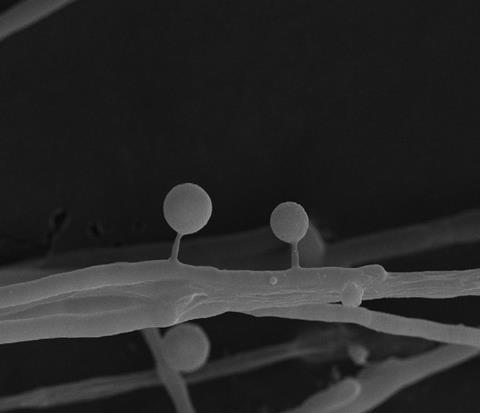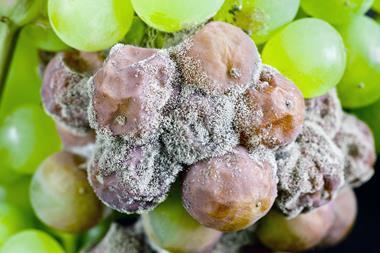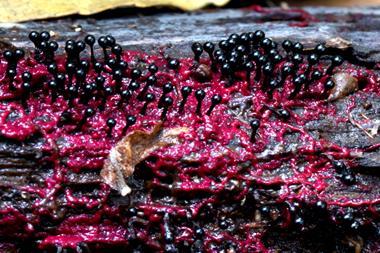A carnivorous mushroom has been discovered that accumulates a toxic ketone in a specialised organ and unleashes it at the slightest disturbance to kill its prey. The unmasking of the fungus’s chemical warfare agent could offer new ways to control agricultural pests.
Fungi in resource poor environments have evolved unique adaptations to catch and kill animals like soil dwelling nematodes. Well-known examples from the phylum Ascomycota use net like structures that ensnare roundworms. Pleurotus ostreatus, the oyster mushroom, a distant relative of Ascomycota has devised a unique strategy – toxic gas.
‘People discovered that the oyster mushroom can paralyse and consume nematodes back in the 1980s,’ says Yen-Ping Hsueh, associate professor at the Institute of Molecular Biology in Academia Sinica, Taipei. How they did it was unknown, however, until Hsueh’s discovery that the ketone 3-octanone was being used as a nerve gas to paralyse and kill the mushroom’s prey. Once dead, the fungi then penetrates the worm with its filaments and consumes the nutrients.
Many animals produce volatile organic compounds (VOCs) like 3-octanone and plants and fungi use them as signalling molecules. According to Jianping Xu, professor of biology at McMaster University, 3-octanone is quite versatile and used by fungi, plants and animals. ‘Its versatility is due to its physical–chemical properties, such as being hydrophobic and having low surface tension, allowing it to be highly volatile and diffusible in both abiotic and biotic systems,’ he explains. The novel use of 3-octanone to catch prey relies on the mushrooms’ ability to store it at high concentrations.

By mutating P. ostreatus, Hsueh saw that without a small lollipop like structure called a toxocyst, the mushroom couldn’t kill nematodes. Unlike the rest of the mushroom this structure is incredibly fragile and breaks at the slightest touch. However, placing worms on plates with ruptured toxocysts did nothing.
‘This suggested to us that the chemical nature of the toxin is volatile, otherwise the toxin should still be present on the plate,’ she says. Gas chromatography mass spectrometry experiments captured and characterised the volatile being released, identifying it as 3-octanone. In vitro studies with nematodes showed that at high enough concentrations 3-octanone killed by destroying cell membranes. According to Hsueh the unique adaptation ‘is not really the compound per se, but it’s the ability to develop [the toxocyst], and store octanone at high local concentration’.
For Markus Künzler, professor of mycology at ETH Zürich, this begs the question ‘how does the fungus make sure that this compound, which is apparently pretty toxic and general in its activity, does not harm the fungus?’
Hsueh explains that the toxocyst grows outside of the main body of the mushroom and that it’s membrane composition is likely different from typical fungal cells. Investigations into the structure of the toxocyst are ongoing but it appears that the fungi keeps octanone sequestered away from its own vulnerable cells with this specialised organ.
Several related VOCs were also shown to have nematocidal effects, highlighting their potential as a biocontrol agent. Hsueh says that the size of the carbon chain is key to membrane disruption as a longer carbon chain increases the hydrophobicity of the VOC and its affinity for membranes, making them more deadly.
References
C-H Lee et al, Sci. Adv., 2023, 9, eade4809 (DOI: 10.1126/sciadv.ade4809)












No comments yet